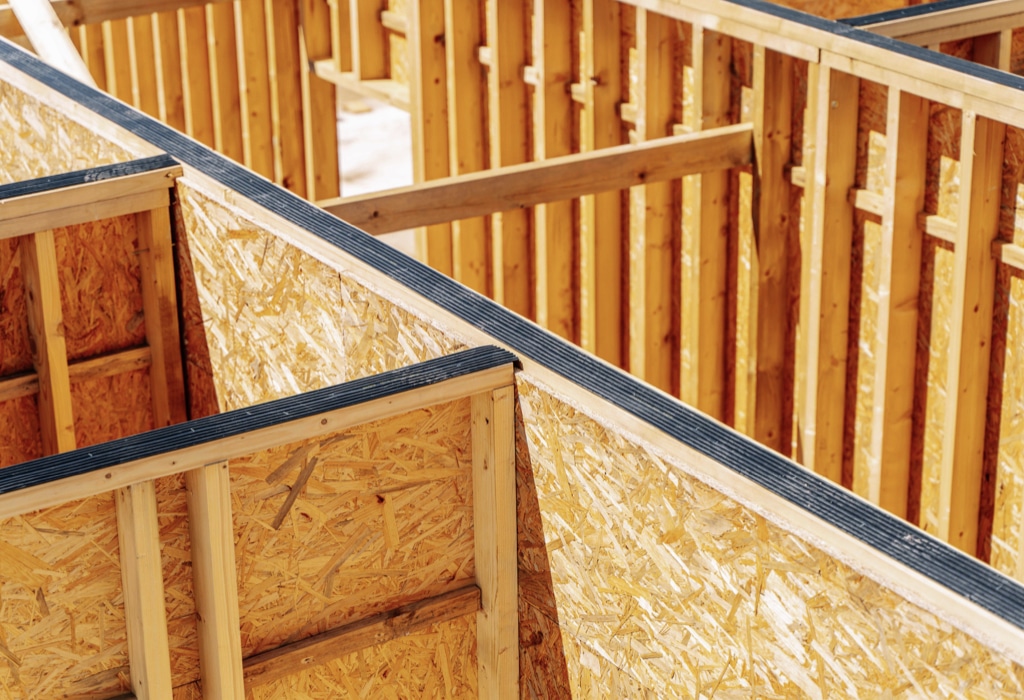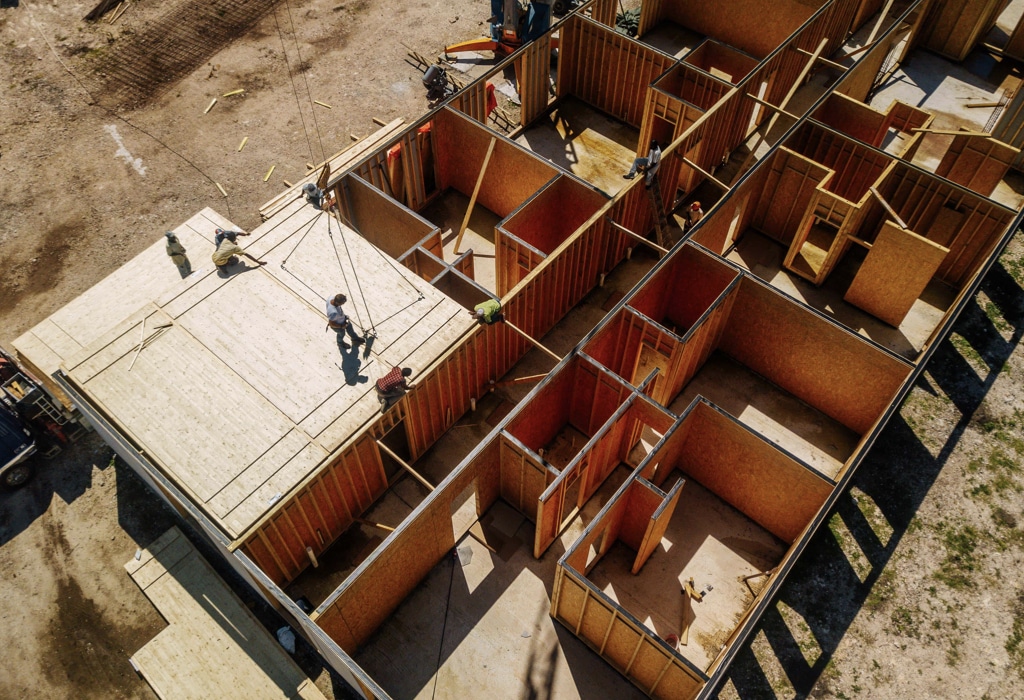
Before industrialisation, we used stone and timber mainly for our houses and bridges, but then in the 1800s steel was developed and in the 1900s steel reinforced concrete was developed. For about two hundred years, the use of timber diminished and the use of steel and reinforced concrete was seen as the modern way of construction. But we would like to predict that the 21st century will see the dawn of the new timber age.
This was a result of two aspects: One of them is the sustainable part of using mass timber, it’s a natural product, it is a re-growing product. Secondly, after having used the materials for years, you can recycle and reuse it quite easily. These are currently the driving factors in using the materials on one hand, and on the other hand, the construction industry over time has been redefining itself and looking at how we can work with prefabricated off site solutions.
--- Helmut Spiehs
What we have seen at the moment, the best way to use timber, the most interesting way to use it is in some hybrid ways. By this we mean using a combination of timber and perhaps some concrete or steel structures. For example, if you are building in a more humid environment such as a cellar, you would most likely build this out of concrete instead of timber. For mid-rise and even high-rise buildings, you would always use a hybrid version, a mix of several materials.
The biggest advantage of timber is the high-level of prefabrication and the fact that it’s a light-weight material too. I think in the long-run the share of timber in the building process will grow. I don't think it will fully replace concrete but we will definitely see its growth.
--- Thorsten Helbig

Why do we as architects like this material? We look at the finishes, in the end it’s the quality of the timber. It's really the one thing we like about this material. When you design a house you are looking at how your floor is going to be, how your walls are going to be, how your ceiling is going to be. With the current conventional materials, that always is an add on like your wooden floor, your nice ceiling, your feature wall, they are all things you have to buy in addition to what you have to construct.
But with timber we can make this part of our design and it becomes a more holistic approach. Also by reducing these mounds of layers, we can recycle these products much easier than we can with conventional methods which of course add to the sustainable nature of the material. I think that for us as architects it is an interesting point to think about the building and its flexibility over time together with the high quality finishes of the material, this for us makes a big difference in relation to the conventional materials.
--- Leander Moons

We do see that there is forestry yes, but when you look at and start planning for high scale usage, especially in the building construction space and then using timber as the significant building material you begin to get into problems of having sustainable programs of reforestation and making sure that there is reproduction across many years so that it becomes a sustainable industry.
The potential is quite large, one thing that we have to start talking about is why would timber be the construction material and for people to begin to see that. We do have a conundrum here where there are two lines of education that need to come through. One is let’s look at timber as a construction material because it will help us quickly to achieve the sustainable goals of preserving our environment. So that has to become a priority amongst the people and the government here in Tanzania. Number two is once that happens, it’s not just about preserving our environment but it’s about opening a new source for our economic growth.
--- Lawrence Mafuru
In all continents you will find structures of old craftsmanship made of timber, and all these ancient carpenters knew how to use and protect their timber and keep it well maintained.
Timber is not a new material, infact, it’s been present for centuries, however, the kind of technology that’s being used now with engineered materials, is what creates the efficiency.
Theoretically, it can last forever because there is no corrosion, unlike steel, you have to protect steel, you have to paint steel. Overtime we will see that timber when used properly can be more durable than steel or steel reinforced concrete.
If your timber structure is kept away from humidity it can stay strong forever.
--- Thorsten Helbig
It’s the atmosphere that we create on the inside because of the material, the finishings will be different compared to the white walls of the current houses. The house comes with its own atmosphere and character, right when you step into it.
Another advantage that works really well especially for countries like Tanzania where it's really hot is that timber acts as a cooling factor in the house, concrete absorbs heat while timber does not.
--- Leander Moons
First off you need demand, if you have no demand for a product then you have no market. Another important aspect is the training of consultant companies to train and teach in universities, in highschool and all different levels.
--- Helmut Spiehs
I think there is but we will need to deal with a few issues. We have both demand and supply issues in the country. It’s expensive to source timber locally and so, those that are doing it are importing it. If we can get to a point where we start manufacturing timber so much so that we get to a point where we have a local demand for it.
We would need to really dig down and figure out the supply side challenges which are making the industry so inefficient that it is not attracting a local or domestic market. On the demand side, there is a lot of scepticism on the sustainability and durability of timber and termites as well as the fire issue.
It’s about bringing the two sides together, we really need to make sure that we deal with production in terms of reforestation, and processing capacity must be developed. There is need for improved infrastructure in the areas where the forests are. So that will probably bring down the cost of production and make the final product a lot more affordable.
We need to address both the demand and supply side as they are areas that both need to be addressed in the country. There’s two types of benefits that arise, social and economic, but we need to put in more work so that this materialises.
--- Lawrence Mafuru
First of all, it needs to be built on a sustainable forestry industry. It is key. It means you have to plant and grow more trees than you harvest. With this, the forest actually grows over time and doesn't become smaller.
Secondly, when you use timber you would always substitute other materials that are not Co2 intensive. Cement for example has a lot of Co2 emissions in its production, but also steel. So you omit these, you don't use these materials so there are two effects here: you absorb Co2 but you also substitute other Co2 emissions.
Thirdly, this is a conversation we have already been having in the industry, how can we recycle timber? You could use the same component again, and the more traditional way is use it more or less as an energy source. If you burn the timber, you are avoiding using oil or coal and this already gives you a better advantage compared to other energy sources.
The conversations we have been having at the moment is to recycle the timber on the same level and not to down cycle it but to reuse it more or less for the same purpose.
--- Helmut Spiehs
One of the things that we need to do aggressively as a country is to aggressively start education on green building. It’s not something that we are talking about much here. There is a lot more conversation on carbon emission when it comes to fuel and those types of carbon emissions. But there is very little conversation about how we can reduce/address the problems by green building.
But this is also where the opportunity lies.
--- Lawrence Mafuru
Whatever you are constructing with the timber, you need to make sure that you construct it in such a way that it is not exposed to rain, not exposed to constant humidity. If you protect your timber, your structure can last forever more or less because there is no degradation, there is no corrosion.
Furthermore, lots of studies have shown that over time, even when used in tropical environments, timber is durable and will not increase in humidity, inside of massive timber sections.
--- Thorsten Helbig
Originally it is not protected against termites, however, we have a method called deep-impregnation which then ensures that the timber is protected against termites. When we deliver in regions where it can be affected by termites then we order deep impregnation and then it’s protected.
--- Helmut Spiehs
The moment we start to open up and aggressively push this industry, definitely there will be pressure on the reserves. We will need to create a system where the resources are always available. With forestry it’s the same, it will take a lot of planning and so there will be efforts required from all parts with private sector investors being able to invest part of the money that was generated back to the production line which is growing more trees and more forests.
So for the industry to be sustainable, there must be very clear and sustainable plans that will ensure the supply is guaranteed for many years to come.
--- Lawrence Mafuru
This article was taken from our webinar - The New Timber Age. If you would like to watch this recording, please view it here.